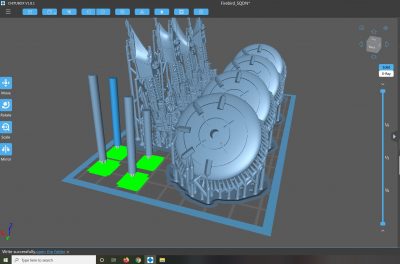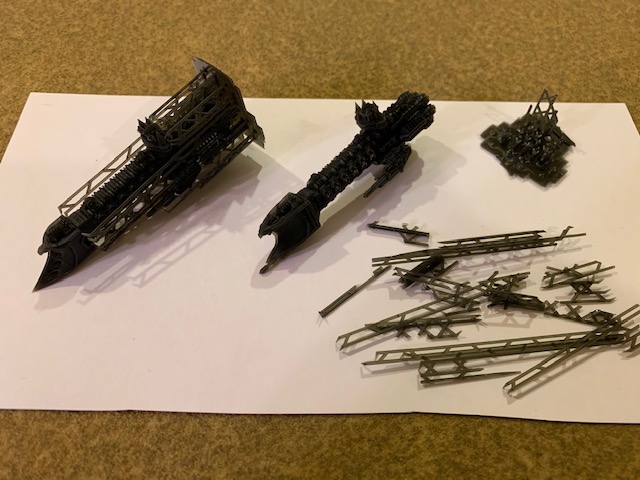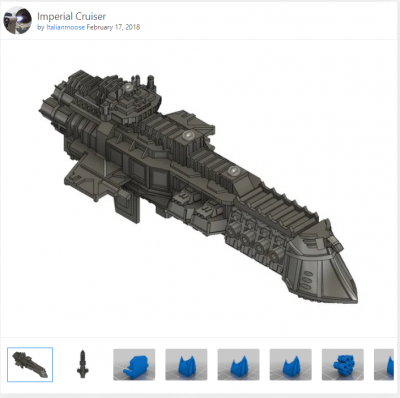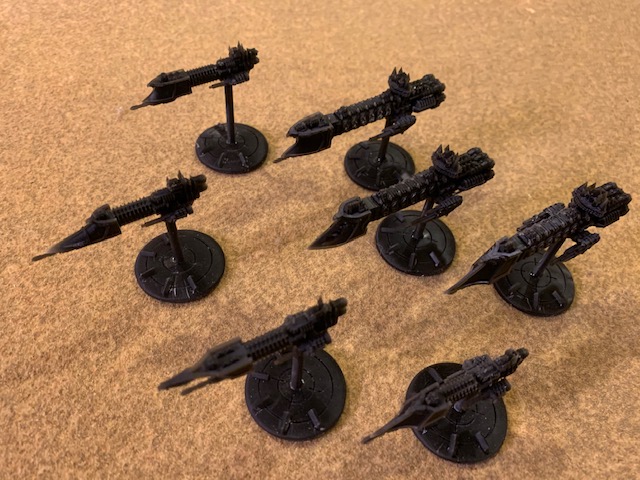3D Resin Printing…..Thoughts about that and the Possible future of Miniature War Gaming
By Tom Burgess
Editor’s note: This is the second of our two part look at 3D resin printing for wargamers.

I know what you are thinking “wouldn’t it be great if I could print the high quality wargame miniatures I want on demand?” The true wargamer response to that has to be “of course!” That’s what I was thinking when I ordered my own 3D resin printer. But it has been an interesting journey for me with some pleasant and some not so pleasant surprises. This endeavor has made me think about the future of wargaming and how I will fit in with it now that I can make my own models.
Quality resin 3D printers are coming down in price and there are so many people offering free and for-a-fee 3D print files, it just may be that we are entering a new age for miniature wargaming. So where might this road be taking us, and is 3D printing for everyone? These are questions that I will attempt to look at in this article. There may be some misconceptions.
So the first thing you are thinking about when considering to buy a 3D resin printer is probably that you’ll save a lot of money on your wargame miniatures.
True, eventually you will likely recoup your investment. The cost per unit of resin miniature is pretty cheap. I mostly game in 15mm/1:100 scale. In that scale, a typical tank model will cost less than $1.00US to print in resin. This is clearly less that what commercially available models cost. But that’s not the true or final cost.
Bedsides the resin, you have to consider the cost of the machine, replacement parts, cleaning agents, protective gear, and cleaning supplies. I can’t tell you how many paper towels my recent 3D efforts have been using up! Though I don’t think resin printers use a lot of electricity, They basically have the power requirements of a cell phone and a small electric motor. However, I suspect running the exhaust fan for three hours during each print job has got to be adding to my electrical bill.
And then there is the time cost as well. I am at the point in my life where my time is money to me. So let’s take a look my time cost. My resin 3D printer can produce three average 15mm/1:00 tanks in one print. I can basically do one print run a night. Each print run takes me about 10 minutes to set up the machine, loading the files and resin. The typical print will be about three to six hours. Then I have about 30 minutes of cleaning the machine and tools. Finally, add another 30 minutes washing of the miniatures prior to curing. Now I can do other things during the print run, like painting miniatures, watching TV, etc. But the time and labor to set up , tear down, and clean/cure the models is substantial. I’d honestly just rather assemble a good plastic kit which is a much more enjoyable process for me than the resin prep and cleanup.

Hidden Costs and Requirements
There are some other hidden time cost that I was not expecting. I.e. file prep. The 3D “Standard Language” (STL) files you usually find are “unsupported.” The “supports” are stilts that allow you to position the models on the build plate at optimal angles for print quality and to save build plate space.
I don’t want to get too technical in this, but you are going to want to spend some time figuring out the optimal angles and build plate placement. And then there are the trial and error runs. You’ll spend a lot of time troubleshooting failed prints.
You’ll also spend a good amount of time hunting down STL files and possibly even editing those files. I I spend a lot of time talking to friends who already printers, seeking advice and suggestions. We all try to share our results and get feedback. Your experience will probably be similar.
Another thing you will need have to have is a dedicated printing space. You’ll need a room with good ventilation. The resin fumes are hazardous and have an unpleasant smell (unless you get the more expensive plant based resins).
The work area needs to have tile or concrete flooring as you eventually have a spill/splatter and the resin “goo” is no fun to clean up. I really hate having to clean the resin off of the printer’s vat and build plate, the tools, and the models you print. Each print run generates a good size pile of resin infused paper towels. These need to be laid out in the sun to cure before they are thrown in the trash.
The liquid resin is really quite toxic, but when cured, is safe to handle and throw away in the normal trash. If you have small children, for the love of God don’t get a resin printer unless you can lock up your printing work area! You do not want toddlers around this stuff. Treat your 3d resin work area like a gun cabinet and make sure its locked up when not being used.

You may think a garage may be good area to set up your printer and work space, but that may not work so well in the winter months in the northern climates. The resin gels up in the cold. You will want a work area that is at least 70F degrees, and really even a bit warmer for some resins. So before taking the plunge and buying a printer, think about what the cost will be to your home in square footage that your work space will require and possible modifications like fans/vents.
One of my friends had a fan/vent installed just for his printing workspace. I am currently using a basement bathroom that has a tiled floor and exhaust fan/vent. This is also the guest bathroom that accompanies the guest bedroom in my basement. My wargaming room is also in my basement. So there are times when I will have to completely break down my 3d printer workspace and return the bathroom to its “normal” use when I have guest and fellow gamers visiting.
Support your FLGS!
The last “cost” I want to discuss is one that is heavy on my mind. There is no doubt that a revolution in 3d resin printers will have a negative impact on your favorite local game store, Hard Knox Games for me, and your favorite miniature game companies, Battlefront for me.

In the US, our hobby depends on these institutions and you have to be conscious of how your decision to get into 3d resin printing will negatively impact them. It won’t do you much good to have an awesome huge printed motor pool of 3D resin wargame models, if you don’t have people you can wargame with. These intuitions help grow, sustain, and motivate the player base. We need that base to keep miniature wargaming a vibrant hobby. Later in this article I will address some ideas on what I will do to support my local game store and game companies even while I print 3D resin models.
I’ve been pretty negative so far in this discussion and you may have got the idea that I am trying to talk you out of buying a 3D resin printer. I am not. I bought one and I do not regret it. I just want prospective future 3D printing wargame hobbyist to be aware of some of the surprises I had encountered on this journey and to consider a bit more deeply if getting into to 3D resin printing is really the right thing for them to do. As there were unexpected negative’s with 3D resin printing I encountered, there are some unexpected positives I found as well that I’d like to share.
A Hobby Unto Itself

To me 3D resin modeling has almost become and hobby unto itself. If you like modifying models, and using 3D editor software to modify models, the hobby is really a lot of fun. There are thousands of free STL files and many could use a few additions and modifications, especially if they have been resized from other scales.
For example I have been adding fender brackets, vision slots, headlights, radio mounts, hatch hinges and handles to one free tank STL file just to “spruce it up.” That has been a fun project as I have never worked with 3D digital files before. I have been using Microsoft’s “3DBuilder” which is free and pretty easy to use. When I finish this STL model modification, I will post it on for others to use or further modify. There is a built in community you will be joining if you go down the 3D resin printer path.
Another advantage I see with printing 3D resin models is that they are comparable in weight to plastic models. At this stage in my life, I am DONE with heavy metal models or models with metal parts. I just want light weight more durable models. If you do have some damage to your resin models, like a broken gun tube or missing part, no problem…just print your own replacement part. You possibly can print replacement parts for your commercial plastic/resin-metal model as well. You could also print things like stowage to add to your traditional commercial models.
You may also find STL files for models you cannot get elsewhere. For example, I plan to do a 15mm WW2 Soviet Winter Churchill Tank force at some point. So I want its supporting Soviet infantry and gun crews in winter gear to go along with these tanks. Neither Battlefront nor Plastic Soldier Company make WW2 “winter” Soviet infantry and gun crews.
But I found a company based in Spain called which has a “March to Hell” line with some decent looking WW2 Soviets in winter gear. The also make some nice USMC 15mm figures without helmet covers that may be just the thing I need to do a US Army Pacific force. Another long term goal that no miniature company has made a reality for me yet.
 If your 3D modeling skills improve enough, you might eventually be able to produce your own STL model files from scratch, and if they are good enough, you can post them on and maybe earn some money for downloads of them. We will see more and more people with ever increasing skills doing this in the future. In some ways, I think 3D printers may help push miniature war gaming back to the “cottage industry” we had before the emergence of big corporate game companies. I also do think there is room for both in this hobby.
If your 3D modeling skills improve enough, you might eventually be able to produce your own STL model files from scratch, and if they are good enough, you can post them on and maybe earn some money for downloads of them. We will see more and more people with ever increasing skills doing this in the future. In some ways, I think 3D printers may help push miniature war gaming back to the “cottage industry” we had before the emergence of big corporate game companies. I also do think there is room for both in this hobby.
So what is my plan to support my local game store and game companies even while I 3D print? Well basically I’ll keep buying. Besides all the books, cards, hobby supplies etc I will buy, if I can find a model I want in a commercial plastic product I will buy that instead of 3D printing that item. Plastic kits will be more expensive than printing in the long run, but what it saves in money is not worth the cost in time and hassle to me. Plus, I like working on plastic kits. Conversely, I have already sworn off buying models in metal and with metal part models. So if it’s a model/kit that I cannot find in plastic, I’m not going to feel one bit bad about going the 3d resin route to add it to my collection.
New Opportunities
I’m sure 3D printing will have some negative impact to the miniature war game companies. But it may also provide new opportunities for them as well. For example, Battlefront is always taking about the need to reduce the number of SKU codes they have and the shelf space their line takes up in the local game store. They might want to consider using plastics for the “common core” of their lines and then sell high quality STLs online for those more unique items. There would be no production cost after file design, no shipping cost etc for these STL files. If they don’t do that then, someone will find or create the STL file desired.

Gamers like me would be more than willing to buy a high quality STL file from a company like Battlefront, Warlord, or 3DBreed. I recently bought a tank STL from 3DBreed that cost me $6.35US even though a free STL for that one tank model was available on Thingiverse. I was more than willing to pay for the better quality file to literally “get those rivets.” “Rivet counters” or not, people will pay for quality.
As big of a 15mm WW2 and Modern war gamer I am, what actually sucked me into 3D printing was not doing models for those games. Lord knows I have more than big enough collections for them already! What drew me in to 3D printing was a desire to get back into Battlefleet Gothic (BFG). Though no longer supported by Games Workshop (GW), BFG is very well supported by its own player community.

GW no longer produces or sells BFG models. So you have to 3D print BFG models or buy extremely expensive second-hand original models on Ebay. However, virtually every model needed to play the game is available as a free STL file for it on Thingiverse. They are decent files too.
Though I could easily get all the BFG STL files I need for free on Thingiverse and they are good….quality sells! I eventually came across a company called “” that had very high quality SLT files for BFG that they market in a unique way. They have a Patreon set up, where I pay $10US a month to receive the files they produce that month.
It’s a subscription where I wait with eager anticipation to see what STLs they release next month. They drop in extra “bonus” surprises from time to time as well. For $120 a year I will get access a ton of high quality BFG STL files. It’s been really fun to be part of their Patreon community and get to vote on future projects. I can also go back and purchase previously released files that I missed in the first few months of the program.
The bottom line is 3D printers are a thing now and will be more of a thing in the future. Both war gamers and war gaming companies have to consider what this capability will bring to the war game community and what it will take away from war game community. War gamers who get into 3D printing will need to think of ways to help make up for their reduced miniatures purchases for the local game stores and war game companies. War game companies are going to have to figure out how they can be part of the 3D printer file action rather than just be cut out of the action.
Now someone please tell the Perry Twins that I am ready to buy every STL file they ever create!


Excellent article and sound advice. Well presented, esp. about work space,vents and time. Superb!